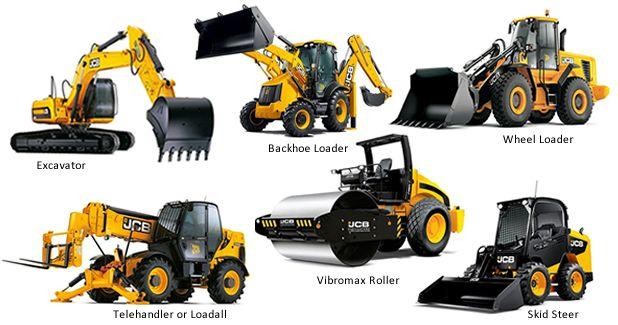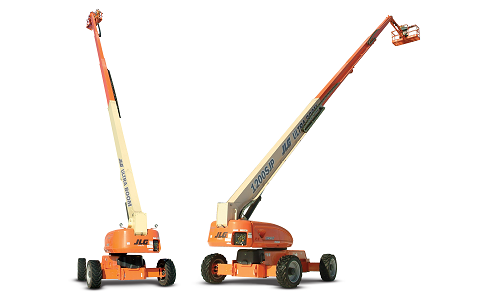Aerial Lift Rental: Versatile Training Solutions for High-Access Jobs
Aerial Lift Rental: Versatile Training Solutions for High-Access Jobs
Blog Article
Optimize Your Budget by Recognizing the Prices Linked With Building Tools Services
Comprehending the full scope of prices associated with building and construction devices rentals is crucial for maximizing your spending plan. While the preliminary rental cost may seem straightforward, countless extra costs-- such as transport, gas surcharges, and maintenance-- can quickly collect, impacting your economic planning. In addition, recognizing various costs and the details of rental arrangements can assist stay clear of unanticipated monetary worries. What techniques can be employed to properly manage these expenses and ensure a much more efficient rental experience?
Review of Rental Expenses
When thinking about building and construction equipment rentals, understanding the connected prices is vital for reliable budgeting and project planning. Rental costs can vary significantly based upon numerous elements, including tools type, duration of service, and location. The initial rental charge commonly shows the devices's market demand and its connected operational capabilities, influencing the general cost.
Along with the base rental price, ancillary prices may develop, such as transportation fees, fuel additional charges, and maintenance costs. It is necessary to account for these added expenditures to precisely assess the total cost of leasing devices. The rental period can impact pricing; longer leasings might qualify for reduced prices, while temporary rentals may incur higher everyday costs.

Failure of Rental Prices
An extensive understanding of rental prices is necessary for service providers and project managers aiming to enhance their budget plans. Rental prices for building devices generally include several components, consisting of base rates, time-based costs, and use charges.
Base rates are the core costs connected with the service of the tools, often established by the type and dimension of the machinery. These rates can differ dramatically, influenced by elements such as tools demand, accessibility, and regional market fads. Time-based costs, which might be daily, weekly, or monthly, offer to accommodate different job timelines and rental durations.
Additionally, rental rates might consist of use fees, which apply when devices is used beyond a specified limit, making certain that the rental firm can account for damage. Seasonal demand fluctuations can also affect rental prices, with peak building seasons normally commanding greater rates.
Additionally, comprehending the rental business's policies regarding maintenance and insurance coverage can offer further understanding right into the overall expense structure. By analyzing these parts, contractors can make enlightened choices, ensuring the selection of rental equipment aligns with both task demands and budget restrictions.
Added Costs to Consider
Understanding the complexities of additional charges is important for contractors to manage their overall leasing costs successfully. Past the typical rental rates, various supplemental fees can considerably impact the overall cost of devices rental. These costs frequently include distribution and pickup costs, which can differ based upon range and logistics involved in moving the devices to and from the work site.
Moreover, some rental firms may impose gas surcharges if the devices is returned with much less fuel than when rented out. It is likewise important to be mindful of potential cleaning charges, specifically for specific tools that requires thorough upkeep after usage.

Completely examining the rental agreement and clearing up these additional costs upfront can assist professionals stay clear of unforeseen prices and make sure that budgets continue to be intact throughout the job lifecycle.
Repair And Maintenance Expenditures
Regular repair and maintenance expenditures are often ignored elements that can considerably influence the general expense of construction tools leasings. When leasing equipment, it is essential to consider not just the rental costs however also the prospective expenses connected with maintaining the machinery in ideal operating problem.
Numerous rental firms include standard upkeep as component of the rental arrangement; nevertheless, extra extensive fixings or unforeseen malfunctions can lead to additional expenses. It's vital to examine the rental contract very carefully to recognize what maintenance solutions are covered and what obligations fall on the tenant.
Furthermore, tools that is not well-maintained can result in ineffectiveness on duty site, potentially triggering delays and enhancing task prices. To minimize these threats, it is suggested Read Full Article to conduct regular assessments and maintain open interaction with the rental supplier relating to any type of issues that arise during use.
Insurance and Liability Costs
Insurance policy and obligation expenses are vital components that can considerably affect the general expenditure of building equipment rentals (dozer rental). These costs guarantee that both the rental business and the customer are safeguarded from possible monetary losses occurring from accidents, damages, or burglary during the rental duration

In addition, customers need to understand any type of deductibles or exclusions in the insurance coverage policy, as these can impact potential out-of-pocket expenses. Recognizing the terms and conditions of any kind of insurance policy protection is crucial to prevent unexpected expenses. Ultimately, budgeting for insurance coverage and obligation costs can assist guarantee a smoother rental experience and secure versus economic risks connected with building and construction projects.
Conclusion
In conclusion, a thorough understanding of the costs connected with building and construction tools leasings is essential for effective budget administration. Inevitably, educated decision-making regarding tools rentals adds to the total success of building and construction ventures.
Rental expenses bulldozer near me can vary considerably based on a number of aspects, including tools kind, period of rental, and area (dozer rental). The rental period can affect pricing; longer rentals might certify for reduced rates, while temporary leasings may sustain higher everyday fees
By carrying out extensive research and engaging with credible rental business, service providers can properly browse the complexities of rental rates, eventually maximizing their monetary sources.
Past the typical rental prices, numerous additional charges can considerably influence the overall expense of devices rental. Rental firms usually give responsibility insurance coverage that covers injuries to third parties or damages to property, while tools damage insurance coverage can cover the price of fixings or substitute if the rented devices is damaged.
Report this page